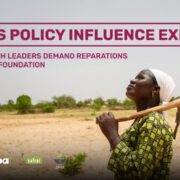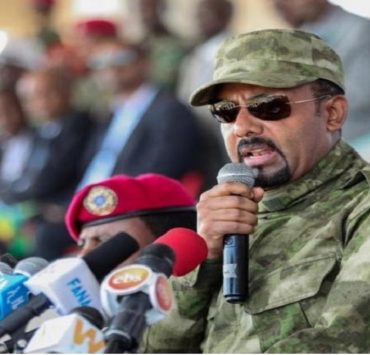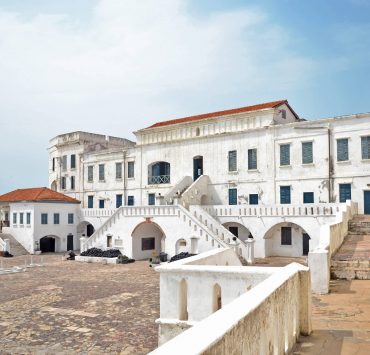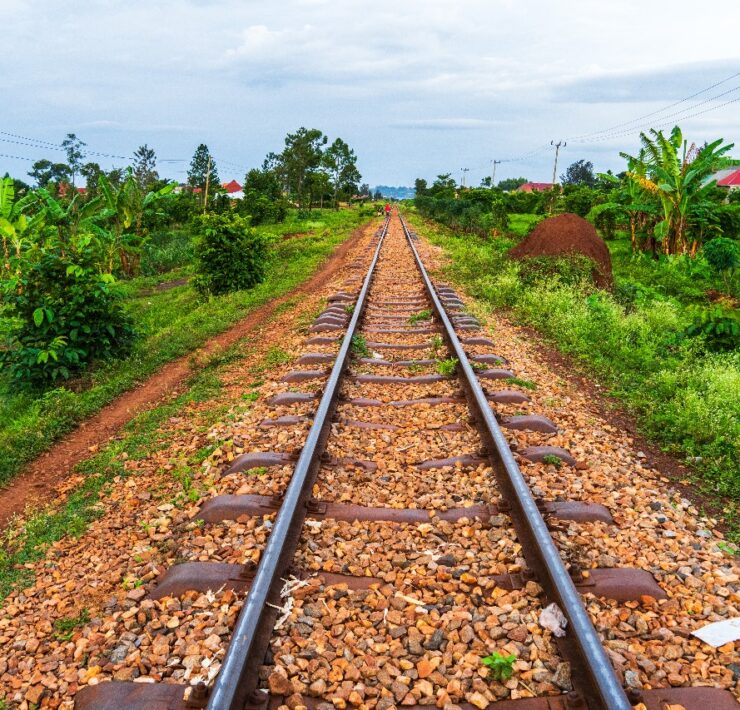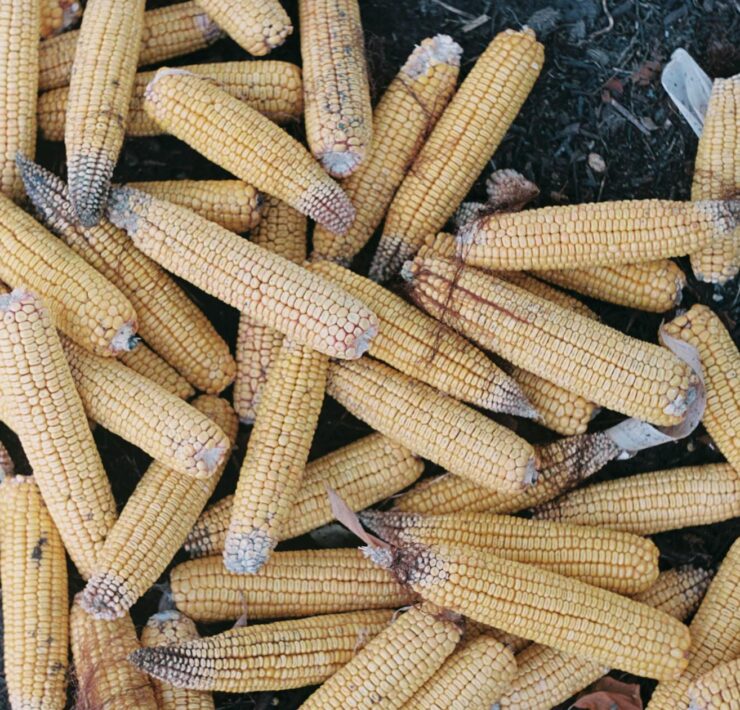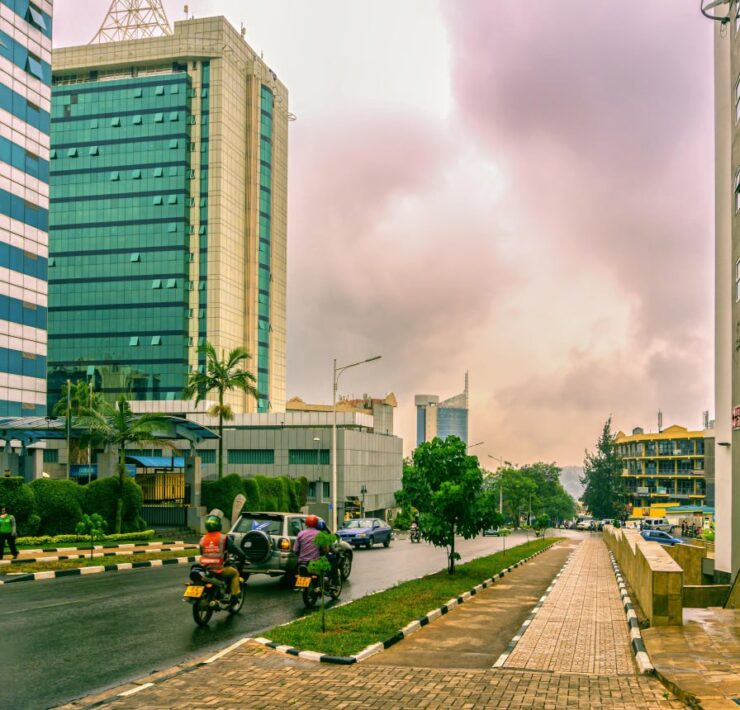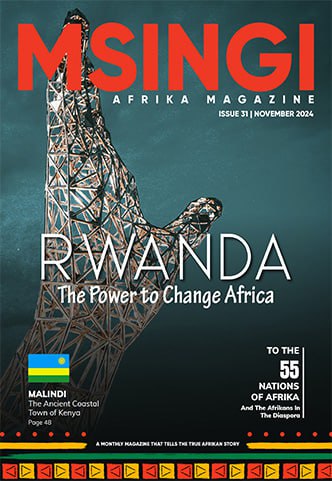Corporations make a killing milking Africa
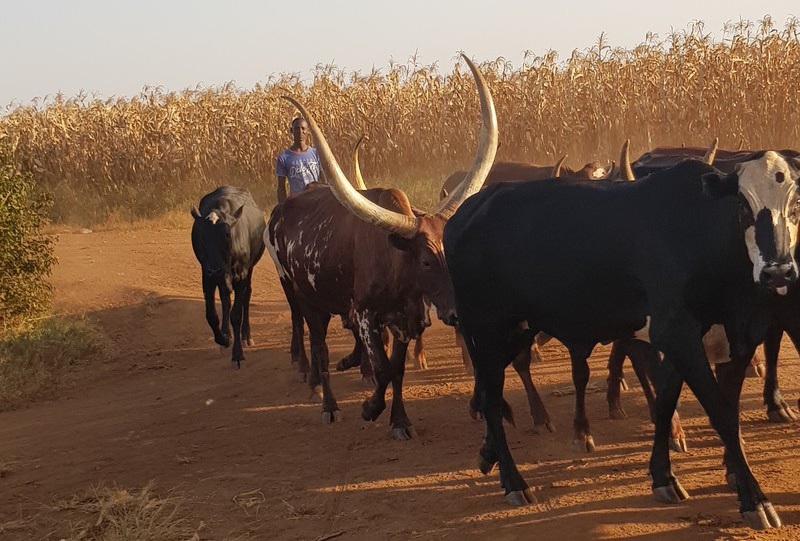
GRAIN is a small international non-profit organisation that works to…

In 2009, the Nigerian government gave some white farmers from Zimbabwe loans and 1,000 hectares (ha) of land each to set up dairy farms in Shonga, an important centre of agriculture about 400 km from the capitol Lagos. Hopes were that their “ultra-modern” farms, stocked with Jersey cows brought in from South Africa, would make a dent in the country’s massive dairy import bill.[1]
“I saw an opportunity here … and I can tell you now there is no doubt I am here for the long term,” said David Higgins, a South African hired to manage the operation’s milk plant, which became a supplier of fresh milk to FrieslandCampina, the Dutch dairy corporation that has dominated the Nigerian market for decades.
However, less than ten years later, the project had all but collapsed. Most of the Zimbabwean farmers had left, and those remaining were “drawing their exit plan”, as one Nigerian researcher put it.[2]
It turns out imported Jersey cows and white “modern” farmers were not the solution to Nigeria’s dairy import woes. The problem, as every cattle herder in Nigeria knows, is the competition with the cheap imported powdered milk that companies like FrieslandCampina dump into the country. The Zimbabwean farmers and their modern methods were equally powerless against it.
Nigeria imports about 98% of the dairy products consumed in the country and spends an average of USD 1.3 billion a year on these imports. It is also the world’s biggest importer of fat-filled milk powder from Europe– a cheap milk lookalike that is made with a mix of milk powders and palm oil that has nearly quadrupled in exports from Europe over the past decade.[3] FrieslandCampina, which brings in huge quantities of subsidised powdered milk from its dairy plants in Europe, controls about 75% of the Nigerian dairy market, with just five companies controlling 99% of it.
Yet Nigeria has one of the largest cattle herds in the world and has a long tradition of local dairy production. By all accounts, things should be similar to Kenya, where herders and small farmers with local breeds of cows supply about 90% of the milk consumed in the country through networks of small-scale traders. The difference is that Kenya has long protected its local dairies with tariffs on imports, while Nigeria opened its market in the 1980s under structural adjustment programmes, and the government has made no real efforts to reign in the import flows ever since.
FrieslandCampina, headquartered in the Netherlands, is in 38 countries and distributes to 100 countries. In every country, they operate as a different company with different brands. It has operated as Bonnet Rouge in West Africa; in Nigeria as Peak and Three Crowns and as WamCo. In Ethiopia, they are the largest investors in the dairy sector operating as Holland Dairy. Together with Syngenta and other agro-chemical companies, Friesland Campina, hopes to be the leader by 2024 in the marketing of Eubiotics – a USD 4 billion industry.

FrieslandCampina likes to blame the “poor structure of local dairy supply chains” for the situation, and whenever the political scene gets too hot, it rolls out promises to invest in “developing” the dairy sector. It built its first large-scale dairy farm in Nigeria in Vom in the Plateau State, back in 1984, but sold the operation, called Integrated Dairies, to a Nigerian politician a decade later.[4] More recently, with funding from the Dutch government, the company launched a Dairy Development Programme with the Government of Nigeria, in which it pledged to source 10% of its milk from local sources through “backward integration”. Yet, over the initial five years of the project, from 2011-2016, Nigeria’s milk powder imports remained unchanged, and FrieslandCampina was only sourcing 3% of its milk locally.[5]
In 2016, with oil prices tanking and its foreign currency reserves badly depleted, the Nigerian government sought to put milk on a list of imported items with forex restrictions to encourage local production. But after several meetings with FrieslandCampina, in which the company assured the government that it would build up local supplies, the government-backed down.
Three years later, with dairy imports as high as ever, the government finally put milk on the list, accusing companies of treating the “national aspiration [to increase the local milk supply] with imperial contempt”.[6] The companies pushed back hard, however, and the government relented yet again, giving FrieslandCampina and five other corporations an exemption on the import restrictions in February 2020, saying that these companies were committed to “backwards integration”.
This latest round of public-private partnership is closely tied to a controversial ban on open grazing that 17 state governors from across southern Nigeria agreed to in May 2021, and which has been called “satanic” by herder leaders.[7] To this end, FrieslandCampina has been given 10,000 ha and Coca-Cola 4,000 ha within the Bobi Grazing Reserve in Niger State to build dairy farms and settle Fulani herders for contract production. Similarly, the Danish multinational dairy company Arla has a partnership with Kaduna State to build its own dairy farm and to settle 1,000 nomadic herders on farmlands provided by the government. The Dutch and Danish governments are helping to fund these projects and provide the participating herders with “improved” crossbred cattle and training on European-style dairy farming, as is the Bill and Melinda Gates Foundation through a programme called Advancing Local Dairy Development in Nigeria.
The Gates-funded programme is a collaboration with six dairy companies in Nigeria, coordinated by Sahel Consulting (formerly Sahel Capital). One of the companies, L&Z Integrated Farms Limited, is owned by a Mauritius-based private equity fund managed by Sahel Consulting that has investment from the German, Dutch and UK development banks, as well as Nigeria’s sovereign wealth fund.[8] Arla is another one of the companies involved, and the rest are Nigerian dairy companies mostly owned by local politicians or their family members.[9]
Sahel says it is taking a “private sector-led and market-based approach to solve the problems inherent in the dairy sector”, but it completely sidesteps the biggest problem: imports of cheap, subsidised powdered milk. The project’s attempt to shift herders to expensive, European-style dairy farming is thus doomed to fail, just as the Zimbabwean farmers did at Shonga and all past efforts to “modernise” Nigeria’s dairy sector have. This is, after all, the main reason why herders from Nigeria and the surrounding countries, who have had no problem meeting Nigeria’s galloping consumption of beef over the past decades, have been shut out of the dairy market.[10]
A milk mafia
Similar scenarios are mushrooming across Africa. It is no wonder. The continent’s fast-growing urban populations represent a pot of gold for dairy corporations. FrieslandCampina made a whopping USD 48 million in profit from its Nigeria operations in 2019.[11] Now it wants to double its revenues in Africa by expanding in other countries such as Côte d’Ivoire, where the company’s recently acquired dairy plant relies entirely on imports. When asked about this lack of local sourcing, FrieslandCampina’s West Africa director, Roger Adou, said the company was in the process of building an “ecosystem” of local dairy farmers trained in Dutch farming methods. “You cannot blame multinational corporations for the poor organisation of local supply chains,” he said.[12]
Another big player in Africa is the French dairy giant Danone, which joined forces with the Dubai-based private equity company Abraaj Group to take over the Ghana dairy company Fan Milk. After Abraaj went bust, Danone took over the whole company in 2019, using it as a base to expand its reach across West Africa, including in Nigeria, where it has a “backward integration” project with Ogun State.
All of the local dairy projects that these foreign corporations are pursuing should be properly understood as fronts, designed to distract from the massive amounts of money they siphon out of Africa from their sales of cheap, excess powdered milk. The system is built on heavily subsidised overproduction in Europe, North America and Australia/New Zealand. That excess gets dumped into Africa, mainly in the form of fat-filled milk powder, where it is processed and sold to urban consumers at prices that undercut the supply of wholesome local milk. In 2019 Africa imported 2.1 million tonnes of dairy products worth some USD5.3 billion, up from 1.46 million tonnes in 2009, worth USD3.6 billion).[13][14]
The cream on top
In Africa, dairy is often political, with direct interests extending to the highest levels of government. No more so in Kenya, where the family of the President, Uhuru Kenyatta, owns Brookside Dairy, the largest dairy processor in East Africa. Brookside has attracted several foreign partners, including Abraaj Group of Dubai, which held a 10% stake via a fund partly owned by the Bill and Melinda Gates Foundation before its collapse in 2018, and the French dairy giant Danone, which currently holds a 40% stake.
Brookside is expanding beyond its borders through the acquisition of other politically-connected dairy companies in neighbouring countries. In 2016, Brookside took over Inyange, Rwanda’s top food processing company connected to President Paul Kagame’s party.[15] And, the year before it bought the former Ugandan Dairy Corporation, which had been privatised through a scandalous corrupt bidding process and acquired by a family close to President Yoweri Museveni, who himself is rumoured to be one of Brookside’s leading suppliers of milk through his large-scale ranches.[16]
Donors insist that Africa’s reliance on imports can be resolved by “modernising” their farms and supply chains. The Gates Foundation supports multiple initiatives in Africa to boost per farm milk production by replacing local breeds with high-yielding breeds and introducing commercial animal feeds and pharmaceuticals, such as the East Africa Dairy Development Project in Kenya, Rwanda, and Uganda.[17] So too do the governments of the Netherlands, France and Denmark– home base to the largest companies exporting dairy to Africa.[18] (Box: Africa’s rich livestock diversity) Meanwhile, the Economic Community of West African States has launched a five-year “dairy offensive” based on the same model, as its member states move ahead with trade deals with Europe that will reduce tariffs on milk powder from a feeble 5% to zero![19]
Private equity funds are also piling into Africa, with much of their funds supplied by development banks and foundations convinced that there’s money to be made in this modernisation drive. Yet, of the multiple investments private equity firms have made in local African dairy production, few are succeeding (Table: Private equity funds and dairy in Africa). Dubai-based Midcom, for example, tried to buy into the dairy business in Uganda in 2013, with backing from the World Bank’s International Finance Corporation and the Rise Fund, a US-based private equity fund managed by TPG. It’s subsidiary, Pearl Dairies, claimed it would not only become a major player on the national market, but that it would build an export business to neighbouring African countries. But a trade spat with Kenya, where the local dairy industry is controlled by the family of the president, sent the company into a tailspin (Box: The cream on top). In March 2021, Pearl Dairies announced it was shuttering its Ugandan dairy plant and shifting to organic honey production for export to Europe.[20]
Development banks, donors and governments are wasting money and resources trying to industrialise local dairy production in Africa when there is huge untapped potential in traditional systems, which are being held back by imports. Herders in Burkina Faso, for example, once supplied the entire nation with fresh milk. But imports of cheap fat-filled milk from Europe have all but destroyed their production over the past decade. “I’ve tried selling my milk, but most of the time it goes to waste and ends up being poured away,” says Hamidou Bandé, president of Burkina Faso’s National Herders’ Union. He keeps 300 cows but now only sells their meat because he cannot find a market for their milk. “It hurts. The milk we throw away could have been for the calves or our children.”[21]

Contrast this situation with that of Uganda, where a 60% tariff protects small dairy farmers on dairy imports.[22] Today smallholder dairies, composed of small-scale cattle farmers and herders and small-scale dairy vendors and processors, supply 80% of the milk consumed in Uganda. With regional tariffs keeping milk powder imports out of East Africa, small dairy farmers in Uganda have been able to effectively supply a surge in demand over the past two decades, and they have done so with indigenous cattle breeds and traditional farming practices.[23] The country’s few dairy companies have, on several occasions, tried to use their political connections to get laws passed to undermine this so-called “informal sector”, but farmers and small vendors have allied to stop them. Nationwide protests of farmers and vendors forced the government to back away from a ban on raw milk sales in both 2007 and 2014.[24]
Africa’s rich livestock diversity
Of the 222 million cattle that provide Africans with dairy and meat, most are owned by smallholder farmers and pastoralists.[25] This cattle population is highly diverse. There are at least 150 indigenous cattle breeds that have been identified on the African continent, and many more remain uncategorised.[26]
Cattle herding in different countries is carried out by specific tribes, such as the Banyankole in Uganda, Masaai in Kenya and Tanzania, and the Fulani throughout the Sahel and West Africa. They each have their own local breeds, like the famous Ankole long-horned cattle found in and around Uganda or the humped Zebu cattle that are kept by Fulani herders, of which there are many of different varieties adapted to the local geographies where they are grazed.[27]
Many of these groups are nomadic herders who move for long distances and periods of time, looking for feed and water for their animals. As such, their cattle breeds are adapted to the local conditions like the high temperatures, drought, the long distances between sources of grass and water and the various endemic diseases, as well as to the needs and cultures of those who depend on them.[28]

In recent years, farmers and even pastoralists have been pushed to adopt “high-yielding” breeds of cows, often crosses between the cows used on industrial dairy farms in Europe and local breeds. These new breeds are offered to women, particularly widows and single mothers in the rural areas of the countries where organisations like Send A Cow and Heifer International operate. By their nature, these foreign breeds are costly and come with onerous instructions for care, health and reproduction, for which the farmers have to take on debt to purchase costly veterinary products, shelters and artificial insemination.Although cattle dominate Africa’s dairy sector, sheep, camels and goats are also important to dairy production, especially in certain areas of the continent. Exact figures are hard to come by, it is estimated that Africa is home to 27% of global sheep and 32% of global goat populations, and about 20% of global cattle.[29]
Many herders and farmers in Africa prefer small ruminants because they tend to involve lower costs and to be easier to manage than cattle. This is especially true for goats, known as the “poor person’s cow”, which have long been raised on the continent.[30][31]
Dairy as a central part of the struggle for food sovereignty
There is no justification for the billions of dollars that exit Africa every year to pay for dairy imports. Dairy can and should be produced locally. As can be seen in Uganda, and neighbouring Kenya, there is one simple, effective measure that can be immediately taken: a stop on imports of powdered milk.
There are several options that African governments can take immediately to put the brakes on imports of powdered milk if there is political will. But many African governments are going in the opposite direction, in negotiations with Europe for the Economic Partnership Agreements or even in Africa’s own Continental Free Trade Agreement (AfCFTA), which undercut the possibilities their countries have to protect local dairy production. The governments of the big surplus milk-producing countries in Europe, North America and Australia/New Zealand are also maintaining their relentless pressure on Africa to absorb more dairy from their corporations, even as these policies leave their own dairy farmers in crisis.

When dairy imports are curtailed, smallholder dairies in Africa will step into the void and meet the local demand, as they have wherever such measures are put in place. They can do so without adopting Europe’s industrial dairy farming practices and breeds of livestock. In fact, Africa’s local livestock systems and breeds of animals are highly efficient in securing milk and livelihoods for local communities and much more adapted to the context of climate change than the industrial models.
Donors and governments have to stop pushing industrial dairy, and development banks need to stop financing companies that compete directly with smallholder dairies. What is needed are regulations, policies and programmes that support smallholder dairies, making it easier for them to supply urban markets with fresh milk. Simple measures like the provision of small cooling tanks or efficient pasteurisation burners can make a huge difference. So too can municipal regulations that provide small vendors and traders accessible and safe spaces to bring their dairy products from the countryside to urban consumers. And foreign governments and donors should start by turning their attention back home, where the industrial, corporate-controlled dairy systems are not only killing Africa’s dairies but are causing numerous environmental and social problems at the source. Actions need to be taken to greatly reduce dairy production in these countries while ensuring livelihoods for their dairy farmers.
There are several inspiring initiatives already underway in Senegal, Burkina Faso and other African countries encouraging the consumption of local milk. These need to be ramped up and multiplied, while keeping dairy corporations like FrieslandCampina and supermarkets like Auchan, who are falsely advertising themselves as “local”, out of the picture. It is time that Africa’s diverse smallholder dairies, composed of millions of herders, farmers, vendors, and processors, utilising traditional breeds of cattle, goats and sheep, and making all kinds of yoghurts, cheeses and other healthy dairy products, are finally celebrated and supported.
Private equity in Africa’s dairy sector
| Company | Countries | Private equity/corporations involved | Notes |
| Société Africaine des Produits Laitiers et Dérivés (SAPLED) | Côte d’Ivoire | Duet Private Equity | In 2015, the UK-based private equity group Duet acquired SAPLED from the Sifaoui Group. In 2019, workers at the company’s factory in Abidjan went on strike over two months of unpaid wages. Thirteen months later, in February 2021, they were back on strike, this time over four months of unpaid wages. The General Director blamed the company’s debts for the unpaid wages. |
| MB Plc | Ethiopia | Cerberus Capital Management | In 2016, Singapore-based SGI Frontier Capital, which was backed by the UK’s CDC Group, acquired a 45% stake in MB Plc, makers of the Family Milk brand in Ethiopia. In 2018, CSGI Frontier Capital was acquired by Cerberus Capital Management of the US. |
| Fan Milk | Ghana, Nigeria, Côte d’Ivoire, Togo, and Burkina Faso | Danone, Abraaj Group | In 2013, the private equity fund Abraaj Group and Danone acquired Ghana-based Fan Milk, “the leading manufacturer and distributor of frozen dairy products and juices in West Africa”. In 2019, Danone acquired Abraaj’s stake, giving it 100% control of the company. In February 2021, Fan Milk announced an agreement with Nigeria’s Ogun State to build a large-scale dairy farm. |
| Countryside Dairy | Kenya | DobEquity, Acumen (FMO, Proparco, etc) | In 2016, the Dutch private equity firm DobEquity purchased a stake in newly established dairy processor Countryside Dairy. In 2021, it received further investment from the Acumen Resilient Agriculture Fund, a fund managed by New York-based private equity firm Acumen and backed by the Dutch development bank FMO and the French development bank Proparco, along with the Soros Economic Development Fund. |
| Brookside Dairy | Kenya, Rwanda, Uganda | Danone, Abraaj Group | Kenya-based Brookside is the largest dairy processor in East Africa, buying milk daily from 200,000 farmers and operating in 12 countries. It was founded and remains majority owned by the family of the Kenya’s president, Uhuru Kenyatta. Brookside’s expansion has been aided by foreign investment, first from Abraaj Group of Dubai, which held a 10% stake via a fund partly owned by the Bill and Melinda Gates Foundation before its collapse in 2018, and then the French dairy giant Danone, which now holds a 40% stake. |
| L&Z | Nigeria | Sahel Capital | In 2015, the Fund for Agricultural Finance in Nigeria acquired a 25% stake in the Nigerian dairy processor L&Z Integrated Farms. The Kano State dairy company was founded by Muhammadu Damakka. The Fund for Agricultural Finance in Nigeria is managed by Nigerian private equity firm Sahel Capital and is backed by Nigeria’s sovereign wealth fund and the development banks of Germany (DEG), the Netherlands (FMO) and the UK (CDC). In June 2021, Sahel disclosed that it was in the midst of an exit from the company. |
| Sosaco Nigeria | Nigeria | GBfoods Africa Holdco (jointly owned by GB Foods of Spain and Helios) | Sosaco was a subsidiary of the Honk Kong trading company Watanmal, whose main products are tomato paste imported from China and sold under the Gino brand and Jago processed milk. In 2017, GB Foods of Spain and the private equity fund Helios Investors III acquired Watanmal’s African operations, alongside a USD15.5 million investment from the World Bank’s IFC. |
| Ndoto Farms | Tanzania | AgDevCo | In 2013, Ndoto Farms, a dairy farm in Iringa with a herd of around 350 cattle, received a USD 90,000 investment from the AgDevCo, a UK private equity fund that mainly invests on behalf of the UK’s DFID. |
| Tanga Fresh | Tanzania | DobEquity | Tanga Fresh operates Tanzania’s largest dairy processing plant in the Tanga region, where the government and foreign donors have been promoting the development of dairy farming. The company received an initial investment from the Dutch private equity firm DOB Equity in 2007 and a further, undisclosed investment in 2020. |
| Pearl Dairies | Uganda | MIDCOM, TPG Capital | MIDCOM is a Dubai-based company run by Indian businessman Anand Kapoor, with backing from established Indian-Ugandan businessman Bhasker Kotecha, who is the owner of Midland. Pearl received an investment from the World Bank’s IFC of USD 8 million in 2013 towards the construction of the powdered milk plant in Mbarara District. TPG’s Rise Fund now owns 34% of the company, with Kapoor and Kotecha retaining 33% each. While TPG claimed it would help take Pearl international, targeting Algeria, Ethiopia, Malawi and South Sudan, in March 2021, Pearl Dairies shuttered its milk processing plant in Mbarara and announced it was shifting to honey production for export to Europe. |
| Lakeside Dairies | Uganda, Kenya | Dodla Dairies, TPG Capital | Lakeside is a subsidiary of the Indian dairy company Dodla Dairy, which entered Uganda through a purchase of Hillside Dairy and Agriculture Ltd in 2014-5. Dodla also has a milk trading company in Kenya called Dodla Dairy Kenya. Dodla is 25% owned by TPG’s Rise Fund, and 5% by the World Bank’s IFC. |
| Dendairy | Zimbabwe | Dendairy is 27% owned by the Norwegian private equity company Spear Capital, which lists Norfund and the Government of the Netherlands among its investors. It was granted lands by the government in the Chiredzi area, where about 12,500 people of the Chilonga Community live and are set to be evicted. The communities have been fighting to stop the eviction. | |
| A fully referenced table is available here |
[1] Daily Trust, “Inside The Ultra-Modern Kwara Shonga Farms,” October 2010: https://dailytrust.com/inside-the-ultra-modern-kwara-shonga-farms; https://www.farmlandgrab.org/post/view/9126[2] See Adekunle E. Ayandele, Dairy Scientist. Christian Albrechts University, Kiel, “Dairy farming in Nigeria: Past, present and future,” July 2020: https://www.researchgate.net/publication/[3] Fanny Pigeaud, “L’Afrique de l’Ouest consomme de plus en plus de «faux lait» européen,” Mediapart, 3 June 2019: https://www.mediapart.fr/journal/international/030619/l-afrique-de-l-ouest-consomme-de-plus-en-plus-de-faux-lait-europeen?utm_source=20190603&utm_medium=email&utm_campaign=QUOTIDIENNE&utm_content=&utm_term=&xtor=EREC-83-[QUOTIDIENNE]-20190603&M_BT=181851838869 ; Hélène Botreau et Pascal Erard, “Crise laitière, une épreuve commune pour les éleveurs européens et africains,” WikiAgri, 18 May 2020: https://wikiagri.fr/articles/crise-laitiere-une-epreuve-commune-pour-les-eleveurs-europeens-et-africains/20794; https://www.sol-asso.fr/wp-content/uploads/2020/01/Protecting-West-African-local-milk-from-EU-dumping-of-milk-powders-June-20-2020.pdf[4] The farm and the company are owned by Air Vice Marshall Ishaya Shekari, the former military governor of Kano State.[5] PricewaterhouseCoopers, “Transforming Nigeria’s Agricultural Value Chain,” 2017: https://www.pwc.com/ng/en/assets/pdf/transforming-nigeria-s-agric-value-chain.pdf[6] “Furore over proposed CBN’s forex restriction for dairy importation,” Daily Trust, August 2019: https://dailytrust.com/amp/furore-over-proposed-cbns-forex-restriction-for-dairy-importation; Oladeinde Olawoyin, “CBN restricts forex on milk importation to FrieslandCampina, 5 others,” Premium Times, February 2020: https://www.premiumtimesng.com/news/top-news/376870-cbn-restricts-forex-on-milk-importation-to-frieslandcampina-5-others.html[7] “Le pâturage libre interdit dans une dizaine d’États du sud du Nigeria,” RFI, September 2021: https://www.rfi.fr/fr/afrique/20210923-le-p%C3%A2turage-libre-interdit-dans-une-dizaine-d-%C3%A9tats-du-sud-du-nigeria; “Anti-Open Grazing Law Is Satanic, Empty; Herders Won’t Obey It – Miyetti Allah Dares Southern Governors,” Sahara Reporters, September 2021: http://saharareporters.com/2021/09/07/anti-open-grazing-law-satanic-empty-herders-won%E2%80%99t-obey-it-%E2%80%93-miyetti-allah-dares-southern[8] “AfDB makes USD 9 million equity investment in Fund for Agricultural Finance in Nigeria,” AfDB, August 2016: https://www.afdb.org/fr/news-and-events/afdb-makes-usd-9-million-equity-investment-in-fund-for-agricultural-finance-in-nigeria-15998[9] The companies are Arla, Integrated Dairies Limited (owned by Air Vice Marshall Ishaya Shekari, the former military governor of Kano State), L&Z Integrated Farms Limited (owned by Sahel Capital’s private equity fund), Saj Foods Limited (owned by the brother of Kaduna State politician Aminu_Abdullahi_Shagali), Sebore Farms Limited (connected to the former governor of Adamawa State, Murtala Nyako) and Majestic Farms (whose CEO is the journalist and businessman Al Humphrey Onyanabo).[10] “Fulani herders seek to tap into Nigeria’s booming meat market,” AFP, June 2019: https://sg.news.yahoo.com/fulani-herders-seek-tap-nigerias-190029495.html[11] “Hausse des résultats du laitier FrieslandCampina WAMCO au Nigeria,” Commodafrica, June 2020: http://www.commodafrica.com/30-06-2020-hausse-des-resultats-du-laitier-frieslandcampina-wamco-au-nigeria[12] “Roger Adou, FrieslandCampina West Africa, ‘nous sommes en partenariat avec le gouvernement ivoirien pour former un écosystème de fermiers laitiers’,” Commodafrica, September 2021: https://www.commodafrica.com/23-09-2021-roger-adou-frieslandcampina-west-africa-nous-sommes-en-partenariat-avec-le-gouvernement[13] “African Dairy Market Report 2021 – A €4.8 Billion Market,” Research and Markets, May 2021: https://www.globenewswire.com/en/news-release/2021/05/17/2230691/28124/en/African-Dairy-Market-Report-2021-A-4-8-Billion-Market.html[14] See p. 83 onwards: https://repository.tudelft.nl/islandora/object/uuid:d1094eb2-49c0-4e07-8900-bb97719c51a6/datastream/OBJ/download[15] GRAIN, “Barbarians at the barn: private equity sinks its teeth into agriculture,” 29 September 2020: https://grain.org/e/6533[16] “Brookside buys Sameer’s Uganda dairy operations,” The Star, May 2015: https://www.the-star.co.ke/counties/2015-05-01-brookside-buys-sameers-uganda-dairy-operations/; Thomas Mwebaze and Anne Mette Kjaer, “Growth and Performance of the Ugandan Dairy Sector: Elites, Conflict, and Bargaining,” International Journal of Agriculture Innovations and Research, 2013: https://pure.au.dk/portal/files/71178513/mwebaze_and_kjaer_article.pdf[17] Adela Suliman, ‘“Super’ crops and cows – Bill Gates, UK inject cash into farm science,” Reuters, January 2018: https://www.reuters.com/article/britain-aid-agriculture-idAFL8N1PL2T3; Mark Astley, “Bill Gates charity to fund East African dairy project expansion,” Dairy Reporter, January 2014: https://www.dairyreporter.com/Article/2014/01/17/Bill-Gates-charity-to-fund-East-African-dairy-project-expansion[18] Netherlands East Africa Dairy Partnership: https://www.nlfoodpartnership.com/impact_coalitions/neadap/; “Nariindu 2 : Promouvoir le lait local au Sahel,” AFD: https://www.afd.fr/fr/carte-des-projets/nariindu-2-promouvoir-le-lait-local-au-sahel; Arla, “Arla scales up its commitment to develop a sustainable dairy sector in Nigeria,” September 2019: https://www.arla.com/company/news-and-press/2019/pressrelease/arla-scales-up-its-commitment-to-develop-a-sustainable-dairy-sector-in-nigeria-2918204/[19] Cécile Broutin, Laurent Levard, Marie-Christine Goudiaby, 2018, “Quelles politiques commerciales pour la promotion de la filière « lait local »,” Gret, January 2018: https://www.gret.org/wp-content/uploads/rapport-synthese-etude-lait-afouest-VF2.pdf[20] “Mbarara-based Pearl Dairy Farm lays off 1500 workers”, Independent, March 2021: https://www.independent.co.ug/mbarara-based-pearl-dairy-farm-lays-off-1500-workers/; “Dairy Farmers in Mbarara Turn to Beekeeping over Ban on Milk Imports,” News Day, March 2021: https://newsday.co.ug/2021/03/24/dairy-farmers-in-mbarara-turn-to-beekeeping-over-ban-on-milk-imports/[21] Simon Marks and Emmett Livingstone, “The EU milk lookalike that is devastating West Africa’s dairy sector,” Politico, August 2020: https://www.politico.eu/interactive/the-eu-milk-lookalike-that-is-devastating-west-africas-dairy-sector/[22] A 60% tariff on dairy products is imposed as an East African Community Single Customs Territory Common External Tariff.[23] Indigenous cattle make up 90% of the national herd. Anne Mette Kjær, Fred Muhumuza and Tom Mwebaze, “Coalition-driven initiatives in the Ugandan dairy sector: Elites, conflict, and bargaining,” DIIS Working Paper, February 2012: files.ethz.ch/isn/140699/WP2012-02_Mette%20Kjaer-EPP-Dairy_web.pdf[24] “Dealers strike over govt ban on sale of raw milk”, Monitor, April 2014: https://www.monitor.co.ug/uganda/news/national/dealers-strike-over-govt-ban-on-sale-of-raw-milk-1570354[25] Margaret Ngigi, “The Case of Smallholder Dairying in Eastern Africa,” February 2005: International Food Policy Research Institute. https://core.ac.uk/download/pdf/6288909.pdf[26] Asian-Australas J Anim Sci, “African Indigenous Cattle: Unique Genetic Resources in a Rapidly Changing World,” July 2015: https://www.ncbi.nlm.nih.gov/pmc/articles/PMC4478499/[27] Jean Boutrais, “The Fulani and Cattle Breeds: Crossbreeding and Heritage Strategies,” Africa: Journal of the International African Institute 77, no. 1 (2007): 18–36. http://www.jstor.org/stable/40026696.[28] Okeyo Mwai, Olivier Hanotte, Young-Jun Kwon, and Seoae Cho, “African Indigenous Cattle: Unique Genetic Resources in a Rapidly Changing World,” Asian-Australas J Anim Sci, July 2015: https://www.ncbi.nlm.nih.gov/pmc/articles/PMC4478499/[29] Ella Houzer and Ian Scoones, “Are Livestock Always Bad for the Planet? Rethinking the Protein Transition and Climate Change Debate,” PASTRES, 2021: https://pastres.files.wordpress.com/2021/10/climate-livestock-full-report-en-web.pdf[30] FAO, 2021, Gateway to dairy production and products. https://www.fao.org/dairy-production-products/production/dairy-animals/small-ruminants/en/[31] Alexander Kahi and Chrilukovian Wasike, “Dairy goat production in sub-Saharan Africa: current status, constraints and prospects for research and development,” Asian-Australasian Journal of Animal Sciences, 2019: https://pubmed.ncbi.nlm.nih.gov/31357267/
What's Your Reaction?
GRAIN is a small international non-profit organisation that works to support small farmers and social movements in their struggles for community-controlled and biodiversity-based food systems








